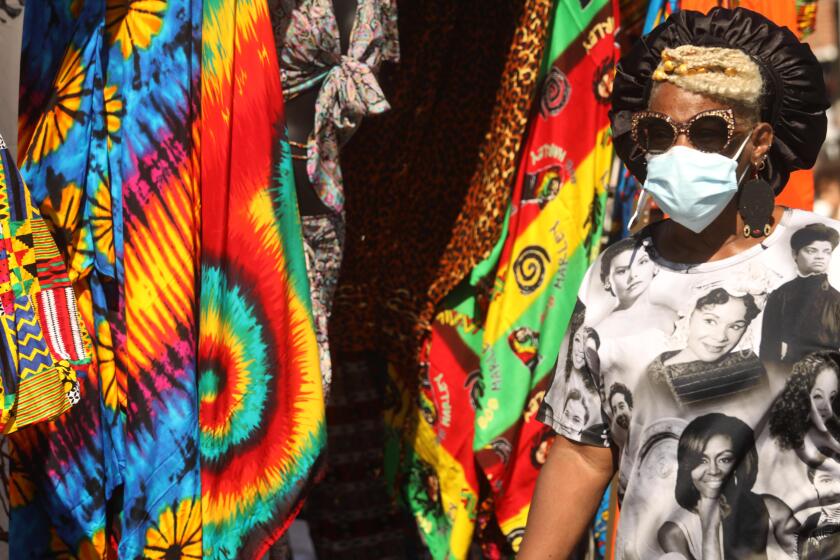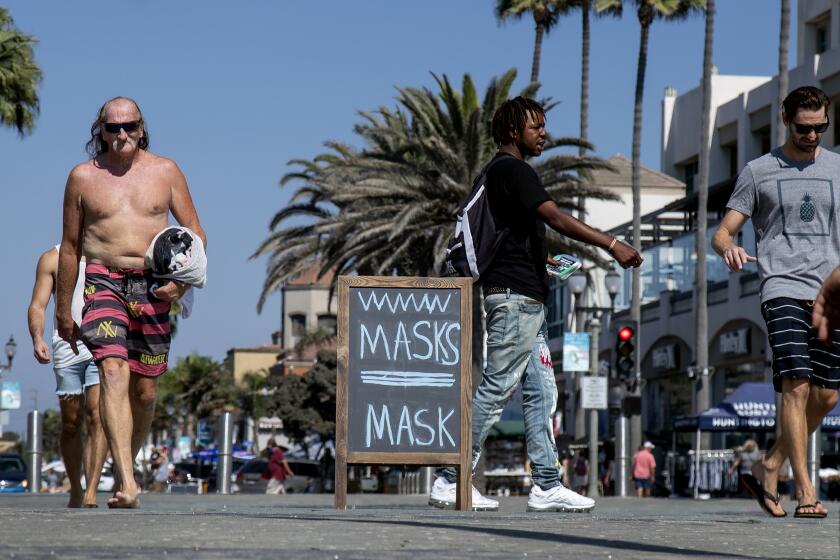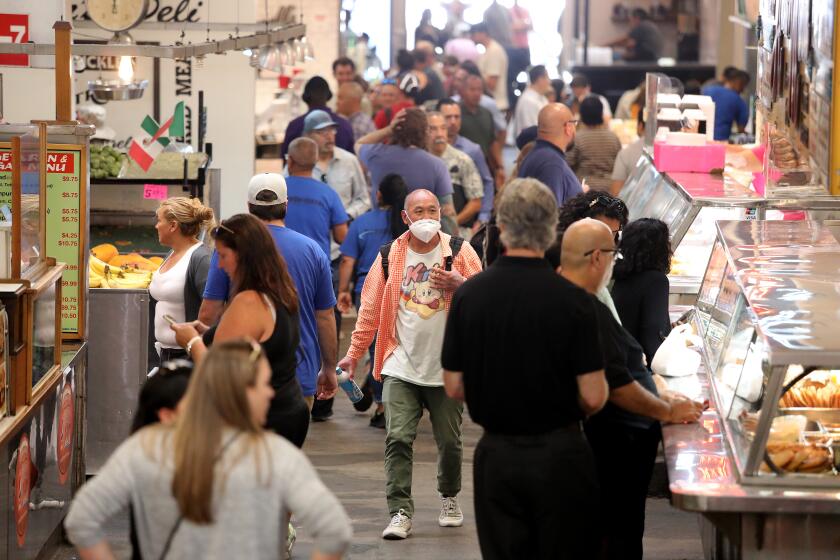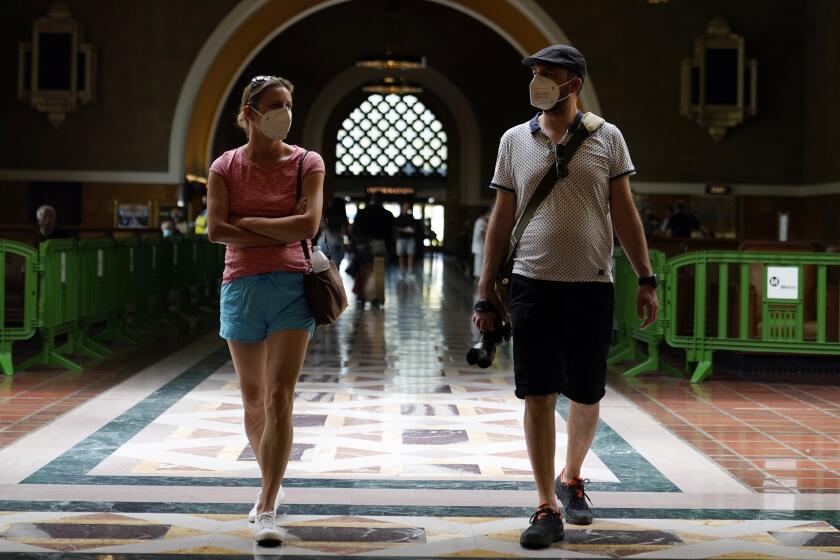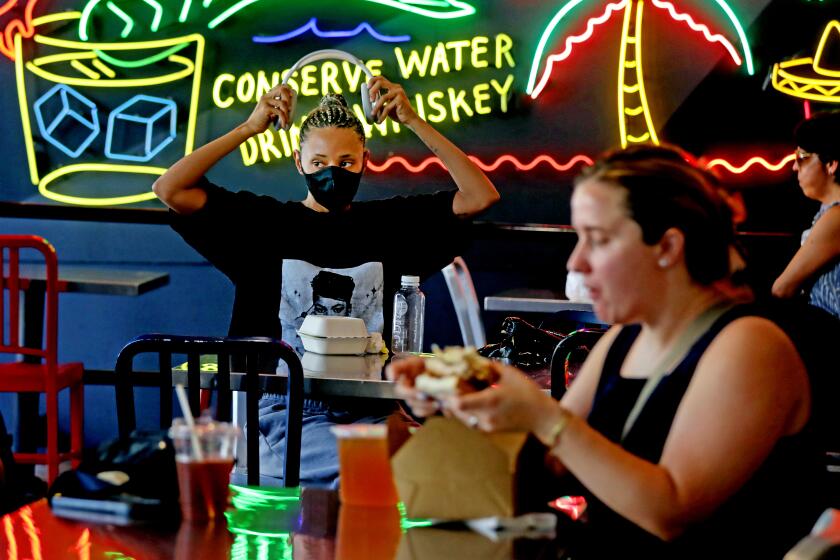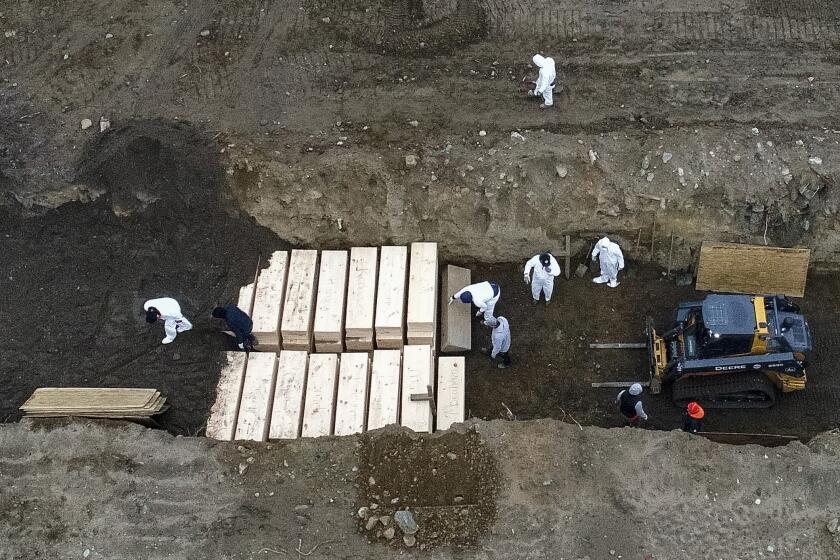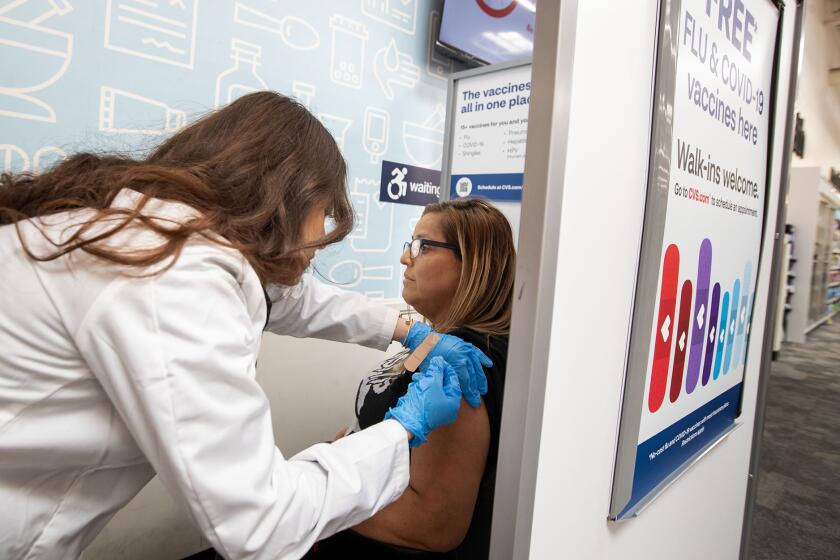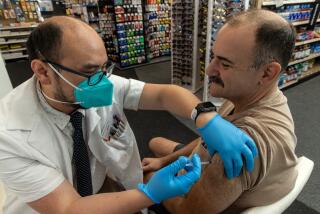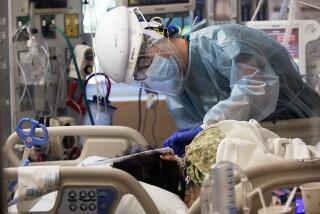Why no one is talking about new mask rules even as COVID-19 rises in L.A.

Despite rising coronavirus outbreaks across Los Angeles County, officials said they have no plans for new public mask mandates — a sign of how COVID-19 policies have changed in an era of plentiful vaccines, lower death rates and back-to-normal culture.
More coronavirus outbreaks have hit some workplaces and schools in recent weeks. But COVID-19 is no longer stressing hospital systems as it did more than a year and a half ago, and health officials say they are not alarmed by the spread.
The theoretical threshold at which health officials would seriously consider a new mask mandate now would essentially be catastrophic and unanticipated. It would likely be on the table only in reaction to a severe rise in deaths and a disastrous collapse in the ability of vaccines, natural immunity and therapeutic drugs to offer protection against severe COVID.
“I’m really not focused on masks coming back as a mandate,” county Public Health Director Barbara Ferrer said in an interview.
“If we ever felt like we needed to return to everybody needing to put their mask back on again, I think we would be in bad shape and most people would want to put their mask on,” she said. “We have such good tools right now that we really shouldn’t get there.”
In Los Angeles County, the number of new COVID-19 outbreak investigations at work sites tripled in the last month, reaching 73 for the 30-day period that ended Sept. 1.
The last universal mask mandate in the nation’s most-populous county ended 18 months ago, as the region emerged from the first Omicron wave — the second-deadliest local surge of the pandemic. Many other government-imposed measures, like vaccination requirements, have also generally ended, even for healthcare workers.
Workplaces in California can still choose to require COVID-19 vaccination as a condition of employment or mandate masks in their facilities.
In lieu of mandates, masking is a matter of personal preference — one that can be influenced by one’s own behavior, health history, living or work situation, or overall transmission trends.
Amid this latest summer coronavirus uptick, Ferrer said she has noticed more people masking up. Even in her own agency, many employees are wearing masks in part because they’ve had exposures to people with confirmed coronavirus infections.
The Huntington Beach City Council voted to ban implementing COVID-19 vaccine and mask requirements in the city.
Ferrer noted that L.A. County is recording an average of one death a day from COVID-19, a number that has remained stable despite the increase in coronavirus circulation. The number could very well rise over time, since deaths are a lagging indicator of coronavirus spread, but the fact that it hasn’t yet so far is notable.
Health officials say the sweeping actions mandated by government officials earlier in the pandemic were aimed at keeping hospitals from being so overwhelmed by COVID-19 patients that doctors would be forced to ration care — a fear that came close to reality before vaccines were widely available. During the pandemic’s first winter, hospital morgues were so overwhelmed the National Guard was called in to help transport corpses.
But thanks to effective vaccines, the development of anti-COVID therapeutic drugs like Paxlovid and years of built-up community immunity from prior infections, the risk of dying from or becoming seriously ill with COVID-19 is now much lower — making more forceful interventions such as mask mandates unnecessary.
“For the last few weeks here in L.A. County, we’re still averaging about one, one and a half recorded new deaths a day,” Ferrer said. “When deaths go down to a much lower level, that is a compelling argument that we’re in a new stage of this pandemic.”
Officials had expressed concern that BA.2.86, or Pirola, might be able to more easily infect those who had received older vaccines or had caught the coronavirus before.
There are still plenty of reasons people may choose to wear masks, health officials say, and for them to be required in limited situations. The California Division of Occupational Safety and Health, or Cal/OSHA, generally requires that employees who have been exposed during an active worksite COVID-19 outbreak temporarily mask up to quell spread of the virus.
Ferrer suggested that people wear masks at healthcare facilities and on public transit, and that higher-risk residents wear them in crowded indoor places.
Other California counties do have mask requirements still on the books, but they are limited. San Francisco requires healthcare employees to wear a mask when around patients, a mandate that was dropped by L.A. County on Aug. 11. Most other California counties ended masking requirements for healthcare employees in April.
It would be reasonable, health officials say, to expect that mask requirements could be reinstated in some places, such as hospitals and nursing homes, should conditions warrant. Kaiser Santa Rosa recently instated a mask requirement for healthcare employees due to the rise in local coronavirus transmission.
Amid the latest coronavirus uptick in California, health officials reiterate the same advice: Masks work, but it’s a personal preference whether to wear them.
These are “places where people are really sick, really vulnerable,” Ferrer said. “Already, now we recommend that people start putting their masks back on in skilled nursing facilities. It’s a recommendation unless there’s an outbreak, in which case everyone has to mask up.”
Once the coronavirus enters a skilled nursing facility, there’s often rapid spread. Ferrer said that more than 20% of outbreaks at such facilities involve more than 25 residents.
In Santa Clara County, Northern California’s most populous, masks will again be required for generally everyone in healthcare facilities from Nov. 1 through March 31, its designated “winter respiratory virus period.”
Alameda County, the region’s second-most populous, requires skilled nursing facility employees to wear masks in patient-care areas.
L.A. County health officials recommend that people who have been in close contact with someone infected with the coronavirus mask up for 10 days from the last day they were exposed. Also, anyone who has any respiratory symptoms, such as a cough, runny nose or sore throat, should also wear a covering if they need to be around people.
Coronavirus levels have more than doubled in Los Angeles’ wastewater since the start of summer, state data show.
The county also recommends that people with COVID-19 isolate and stay home for at least five days after their first symptoms or positive test, whichever comes first, and wear a mask when around others, such as family members or roommates.
People can end isolation as early as Day 6 if their symptoms are mild and improving and they’ve been fever-free for 24 hours without needing to take fever-reducing medicine. But officials recommend getting a negative rapid test result before doing so. People can also end isolation after a full 10 days without testing.
If someone does exit isolation after five days, officials suggest they should continue wearing a mask between Days 6 and 10. However, people may stop wearing a mask within this time period if they have two negative COVID-19 tests in a row, taken at least a day apart.
Earlier in the summer, when COVID-19 levels were quite low, a number of health experts stopped wearing masks as much as they once did. Ferrer said she wasn’t wearing one in well-ventilated, uncrowded grocery stores. But with coronavirus levels higher now, she said she’d be especially sure to wear a mask, say, when going to an indoor play or concert hall.
With the emergency phase of COVID-19 over, a Los Angeles Times analysis shows how the pandemic took different tolls on L.A. County and New York City.
A key reason why Ferrer says she continues to mask up in indoor crowded situations is that she’d like to avoid getting long COVID.
While long COVID sometimes seems to correlate with more severe illness, there are people who had a very mild acute COVID case yet still end up with symptoms that develop and endure long past their initial infection, Ferrer said.
“I think for those of us who are cautious by nature, we’re going to be more cautious when we see that transmission rates are going up,” said Ferrer, who has never been diagnosed with COVID-19.
Ferrer encouraged people to make plans now to get vaccinated for COVID-19 and flu. The U.S. Centers for Disease Control and Prevention could take action as early as Tuesday to recommend an updated vaccine, and the new shot could be available in L.A. County as early as Friday. The flu shot is widely available.
Here’s what you need to know about flu shots and when to get them, based on the latest information from the U.S. Centers for Disease Control and Prevention.
And for the first time this year, protection is available against respiratory syncytial virus. Adults age 60 and older are eligible for an RSV vaccine, while young children are recommended to receive monoclonal antibodies that will help reduce the risk of severe illness should they get infected.
For the RSV vaccine and monoclonal antibodies, administration would be done in consultation with a primary healthcare provider, Ferrer said.
More to Read
Sign up for Essential California
The most important California stories and recommendations in your inbox every morning.
You may occasionally receive promotional content from the Los Angeles Times.
